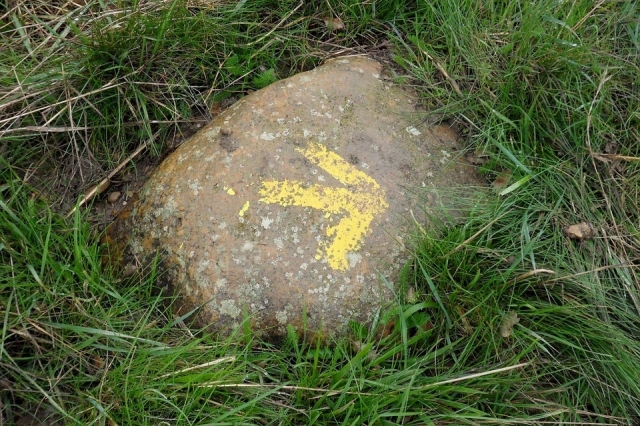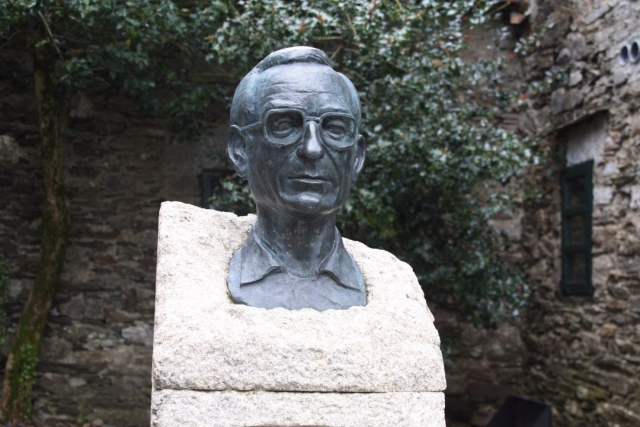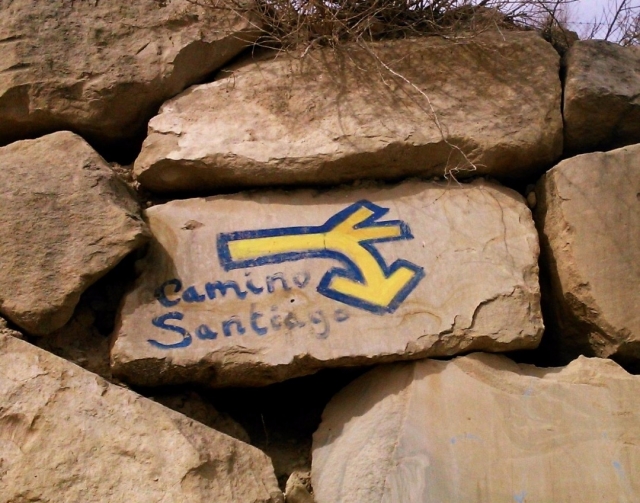Elías Valiña and the yellow arrows of the Camino de Santiago
Where does the tradition to indicate the way forward with yellow arrows comes? How long have been in use on the pilgrimage route?
You have already walk or not the Camino de Santiago pilgrimage routes, certainly at least you may know of the existence of the yellow arrows that signaled it, the symbol of the pilgrimage route without discussion with also the scallop shell. We all follow the path of arrows but not all of us know where it comes from the habit of signaling the right direction this way; some even think that it is a tradition centuries old, but it is not. The yellow arrows started to be seen in the Camino in 1984.
The yellow arrows, are they the result of consensus of a public institution? Any association of friends of the Camino? Any climbing sports federation? The answer surprises, but everything comes from the brush of Parson Elías Valiña, of his famous cans of yellow paint and more importantly, their eagerness to signal the Camino de Santiago from Roncesvalles to push back the pilgrimage route and remove it from oblivion. It is something that seems that "O cura do Cebreiro" (among others) has succeeded.
Who was Elías Valiña? This is one of the most important curators and promoters of the Camino de Santiago. He was born in Sarria in 1929, he graduated in canon law from the Pontifical University of Comillas and a doctorate from the Pontifical University of Salamanca, presenting the thesis "El Camino de Santiago. Estudio histórico-jurídico" in the early 60s. By its contribution to the route he was named commissioner of the Camino de Santiago during Xacobeo First Meeting held in Compostela in 1985.
But what merits are attributed to the priest of O Cebreiro? Signaling the Camino mainly from France to Santiago de Compostela with yellow arrows (with the help of associations of Friends of the Camino), but also for various cleaning and recovery of lost sections of the route and in Galicia. To Valiña it is also attributed the momentum to be carried out the restoration of the historic town of O Cebreiro (the entrance of the road to Galicia majestic views), where he was a priest, and the organization of the first associations of Friends of the Camino, born with the aim of preserving the legacy of the path and the yellow arrows.
Elías Valiño's life is not without anecdotes and stories turned almost into legend, like why the arrows signaling are yellow. The reason is overwhelmingly logic; the priest bought leftover paint at low cost signaling road works (where this color is used instead of the usual white in Spain) and left with his Citroen 2HP to Roncesvalles to go stopping at all points of the French Camino where it was easy to get lost, something very common a few decades ago on the pilgrimage route.
Related
Routes
Blog
 How to get to Sarria to do the Camino de Santiago
How to get to Sarria to do the Camino de Santiago
 Descubre la magia del Camino de Santiago Portugués por la costa
Descubre la magia del Camino de Santiago Portugués por la costa
 5 tours culturales que puedes hacer en Galicia si decides hacer un alto en el camino
5 tours culturales que puedes hacer en Galicia si decides hacer un alto en el camino
 Doing the Camino de Santiago in June: What you should know?
Doing the Camino de Santiago in June: What you should know?
Information
Points of interest
Cities & Towns | Hostels | Lodgings | Restaurants | Saddlery | Doctors | Points of interest | Bikes workshop
Contact us | Privacy policy | Cookies policy | | Terms of use | Authorship | Web Map | Consentimiento
© Copyright LA VOZ DE GALICIA S.A. Polígono de Sabón, Arteixo, A CORUÑA (ESPAÑA) Inscrita en el Registro Mercantil de A Coruña en el Tomo 2438 del Archivo, Sección General, a los folios 91 y siguientes, hoja C-2141. CIF: A-15000649
Developed and managed byHyliacom


